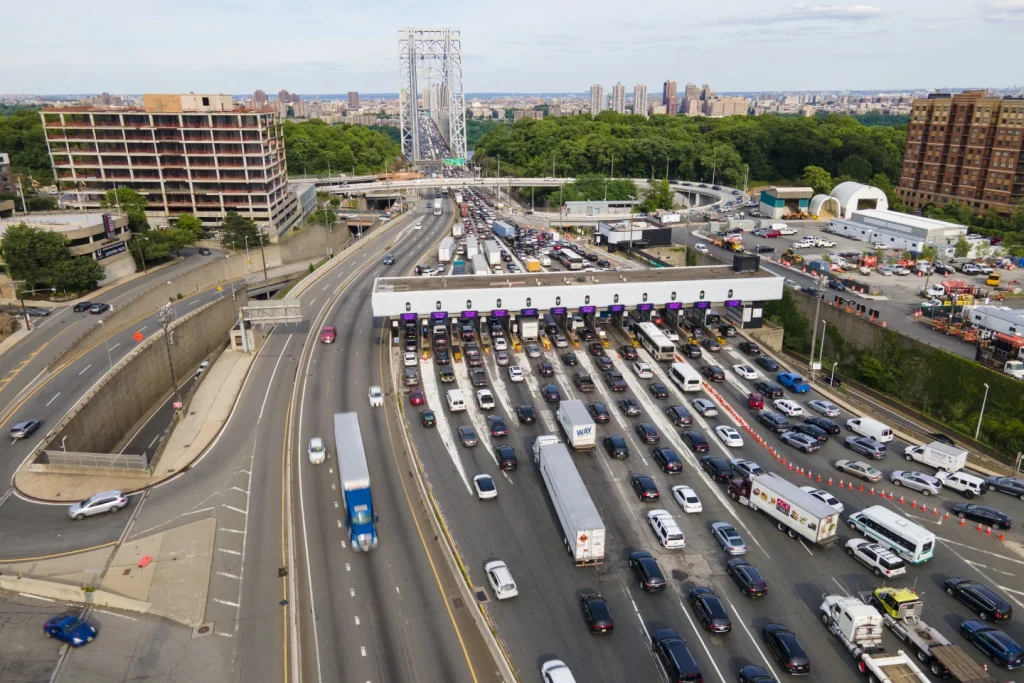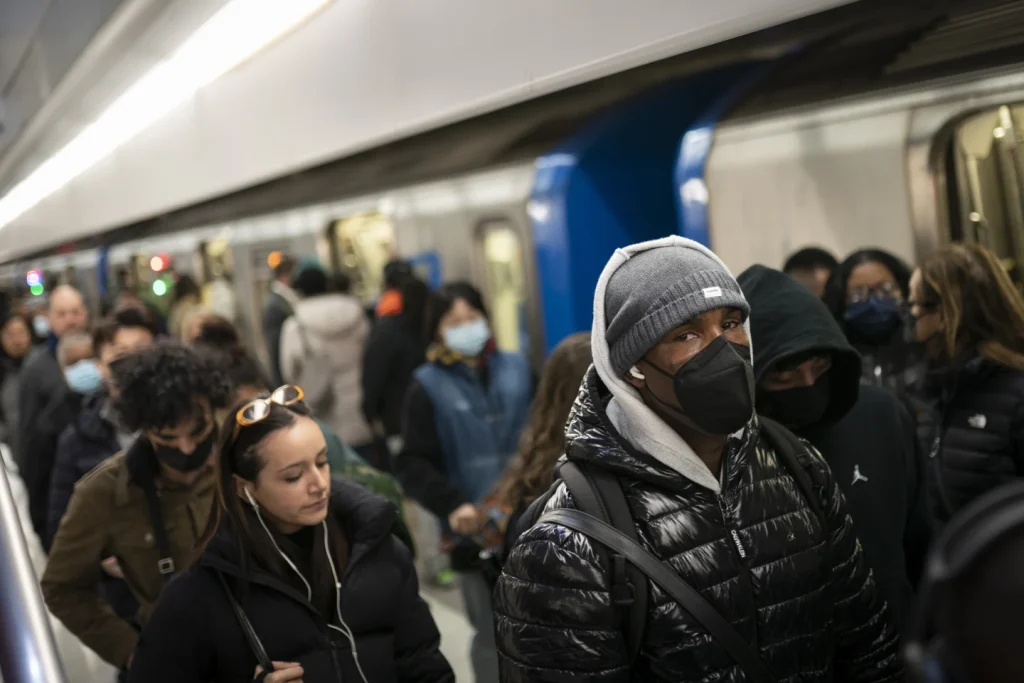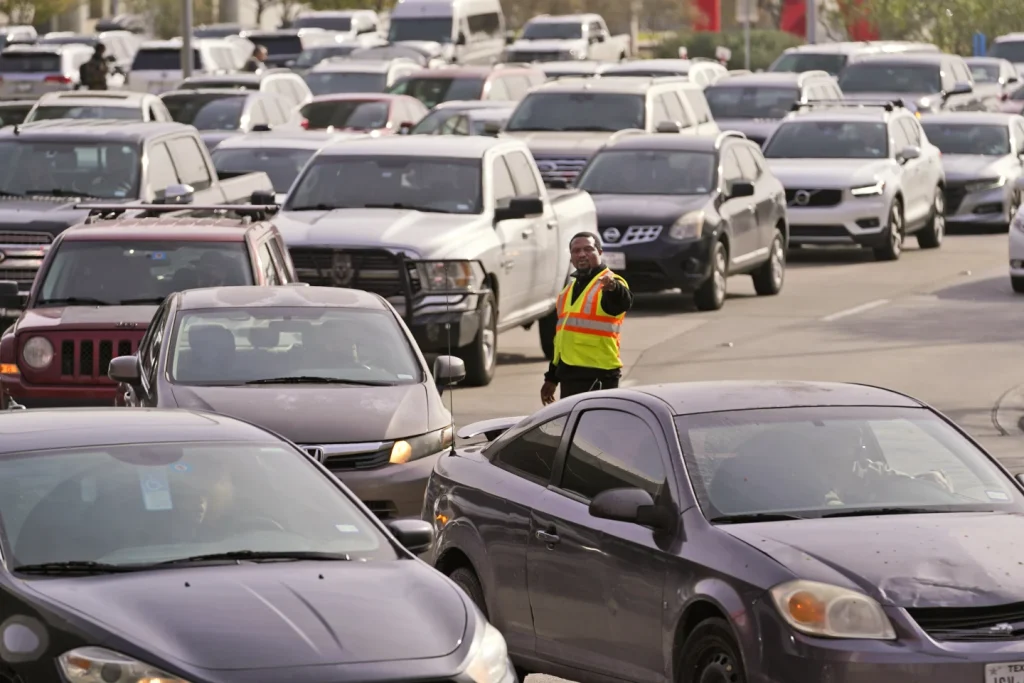According to recent survey data released by the U.S. Census Bureau, the rate of workers driving to their jobs and carpooling increased nationwide last year, indicating a rise in commuter traffic.
Furthermore, the average commuting time also experienced a notable increase of nearly a minute in 2022 compared to the previous year.
This trend can be attributed to the fact that more businesses have transitioned away from full-time remote work, signaling a gradual return to pre-pandemic norms.
The survey also revealed a decline in the percentage of people working from home, dropping from nearly 18% in 2021 to 15.2% in 2022.
The comprehensive survey covers various aspects of American life, including commuting times, internet access, family dynamics, income levels, education, disabilities, military service, and employment, among other important topics.
In March 2022, Mark Behrens, a highly skilled human resources data analyst, found himself embarking on a new chapter in his professional life.
For the past two years, he had been working remotely from the comfort of his home in Orlando, due to the unprecedented circumstances brought about by the global pandemic.
However, as the world slowly but surely began to regain a sense of normalcy, his Fortune 500 company made the decision to implement a new policy requiring employees to spend a minimum of three days a week working from the office.
While this mandate was met with a certain level of resistance from many of his co-workers, Behrens couldn’t help but feel a surge of elation at the prospect of once again being able to engage in in-person collaboration with his esteemed colleagues.
The return to a semblance of pre-pandemic working conditions brought with it a renewed sense of purpose and a heightened appreciation for the value of face-to-face interaction in the workplace.
According to Behrens, there is a distinct advantage to physically coming into the office, even if it is only on a hybrid basis.
This advantage lies in the avoidance of isolation and the ability to foster social connections. When individuals are physically present in the office, they have the opportunity to interact with their colleagues and engage in conversations that may not have occurred otherwise.
By simply seeing people and mentioning the projects they are working on, discussions naturally arise, leading to more in-depth conversations and the potential for innovative solutions.
The act of conversing and collaborating in person allows for a level of synergy and collective thinking that may not be easily achieved through virtual means.
Ultimately, this social interaction and exchange of ideas can lead to increased progress and productivity within the workplace.
According to the American Community Survey’s 1-year estimates, the rate of individuals commuting to work alone in a vehicle saw a slight increase from 67.8% in 2021 to 68.7% in 2022. Similarly, the percentage of carpoolers rose from 7.8% to 8.6% during the same period.
Public transportation usage experienced a modest growth from 2.5% to 3.1% year-over-year. Furthermore, the average time people spent traveling to work also witnessed a notable change, with the duration increasing by almost a full minute to 26.4 minutes in 2022 compared to 25.6 minutes in 2021.
Despite the significant decline in remote work from 2021 to 2022, the prevalence of this work arrangement remained considerably higher than pre-pandemic levels in 2019.
In 2019, only 5.7% of workers reported working remotely, while more than three-quarters of workers drove alone to work in a vehicle.
It is worth noting that the 2022 survey did not provide participants with the option to specify whether they worked from home on a full-time or part-time basis.
Although working from home during the pandemic offered certain advantages, such as the ability to tend to household tasks like cooking during lunch breaks, Allison Graves expressed her satisfaction in returning to her first-grade classroom after teaching virtually for most of the first two years of the pandemic, which began in early 2020.
With her renewed commute, she found joy in catching up on podcasts that she had missed while not spending as much time in her car.
Graves, a resident of Virginia Beach, Virginia, expressed his dissatisfaction with the virtual teaching experience, stating that it simply did not compare to the effectiveness of in-person instruction.
He emphasized that the past two years have been marked by a significant reduction in people’s ability to go out and engage in various activities, and now there is an expectation for individuals to return to their normal routines or adapt to a hybrid model.
This transition, from a predominantly virtual environment to a more physical one, presents a unique set of challenges for both educators and students alike.
The limitations and constraints imposed by virtual teaching have undoubtedly had an impact on the quality of education and the overall learning experience for many individuals.
The absence of face-to-face interaction and the lack of physical presence have made it difficult to establish meaningful connections and foster a conducive learning environment.
As such, the return to in-person or hybrid teaching arrangements brings with it a sense of anticipation, but also apprehension, as educators and students navigate the complexities of this new educational landscape.

In a recent development, the Census Bureau has unveiled new national data pertaining to income, poverty, and the rate of individuals lacking health insurance.
The American Community Survey data, which was made public on Thursday, provides a detailed breakdown of these rates by states and smaller geographical areas.
Notably, the District of Columbia and New Jersey emerged as the frontrunners in terms of median household income, boasting figures of $101,027 and $96,346, respectively, in contrast to the national average of over $74,000.
Conversely, Mississippi recorded the lowest median household income among all states, standing at $52,719.
Furthermore, the rate of individuals without health insurance was found to be at its lowest in Massachusetts and the District of Columbia, with rates of 2.4% and 2.9% respectively, in stark contrast to the national average of 8%.
On the other end of the spectrum, Texas exhibited the highest rate of individuals lacking health insurance, reaching a staggering 16.6%.
Moreover, it is worth noting that there has been a decline in the number of people relocating in 2022 compared to the previous year.
Additionally, there has been a slight decrease in households with children. The average household size has also experienced a downward trend, decreasing from 2.54 to 2.5 individuals, while the average family size has similarly decreased from 3.15 to 3.11 individuals.
These shifts in demographic patterns indicate a subtle but noticeable transformation in the composition and dynamics of American households.

In the ever-evolving landscape of demographics, the foreign born population has experienced a marginal increase, reaching 13.9% in the year 2022.
Concurrently, the percentage of individuals who solely communicate in English within the confines of their homes has witnessed a slight decline, settling at 78% during the same period.
These statistics shed light on the dynamic nature of our society, highlighting the diverse linguistic tapestry that characterizes our communities.
Meanwhile, in the realm of corporate affairs, the implementation of a back-in-office-three-days-a-week work schedule was mandated for Behrens’ office in the aforementioned year.
However, it became apparent that this policy was met with minimal compliance from his colleagues, prompting the decision of Behrens’ company to refrain from renewing its lease on the Orlando office space.
Consequently, the entire workforce of 100 office employees will transition to a remote work arrangement, a prospect that Behrens himself does not anticipate with great enthusiasm as the imminent shift approaches at the end of this month.
The implications of this decision extend beyond Behrens’ personal sentiments, as it underscores the broader trend towards remote work and the adaptability of organizations in the face of changing circumstances.
Behrens expressed his dissatisfaction with the current situation, stating that he would not have the opportunity to see anyone.
While acknowledging that most individuals do not encounter any difficulties with this arrangement and actually embrace it, he personally finds it far from ideal.
The absence of face-to-face interactions and the lack of a daily commute, which others seem to appreciate, leaves him feeling disconnected and somewhat isolated.
Behrens’ perspective highlights the individual differences in how people respond to and cope with changes in their routine and social interactions.
It also underscores the importance of recognizing and respecting these diverse experiences and emotions, as what may be enjoyable for some may not necessarily be the case for others.
